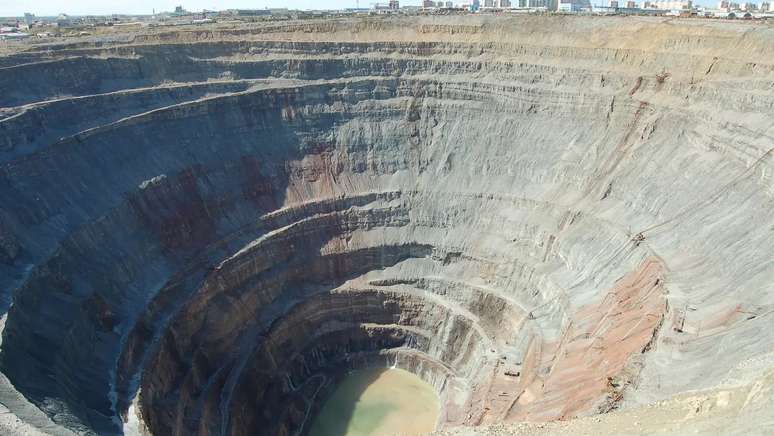Scientists propose new theory about Siberian methane holes, involving thawing permafrost from above and below and climate change
Huge craters in the permafrost of Siberia are the result of explosions, but no one knows what event causes this type of event unique to the Arctic. The Yamal and Gydan peninsulas are the only places hosting the intriguing holes up to 50 meters deep, discovered more than a decade ago, with a definitive explanation still eluding scientists. A new theory, however, could better explain its possible origin.
- The explosion of methane gas in the ground explains the appearance of craters in Siberia
- The Tunguska mystery continues; a new study tries to explain the impact of an asteroid
Pre-published last Friday (12th) – that is, without yet peer review – the article brings together some hypotheses already taken into consideration to try to shed light on the phenomenon. Scientists have already suggested this fall of a meteornatural gas explosions and involvement with historic lakes that would have dried up and would have sealed the vent of the gases, which would have accumulated and exploded as they could no longer remain in the permafrost.
What created the craters in Russia?
The problem with previous theories is that they do not explain several factors involved. One of these is that the craters are located in different geological environments on both peninsulas, and not all were covered by lakes in the past. The explanation involving natural gas does not resolve the fact that the holes are found only in northern Russia: if the gases could have done so, the craters would have appeared in other places in the world.
Another giant crater forms in the Siberian permafrost: blocks of earth and ice thrown hundreds of meters from the epicenter on the Yamal Peninsula https://t.co/iWTvVlumfs pic.twitter.com/lXD8Be90en
— Prof. Jamie Woodward (@Jamie_Woodward_) August 29, 2020
The permafrost of the Yamal and Gydan peninsulas varies in thickness, from a few tens of meters up to half a kilometer (500 m). In the region, the ground froze more than 40,000 years ago, trapping methane-rich marine sediments. Over time, they became reservoirs of natural gas, gradually producing heat, which began to melt the permafrost from below. Gas pockets would then have formed at the base.
Additionally, permafrost in Russia and other parts of the Arctic is melting at the surface climate changes. In places where the ice is already thin on both peninsulas, the fusion at both ends and the gas pressure can possibly cause the permafrost collapse remaining, causing an explosion.
Siberian crater, formed as retreating permafrost releases reservoirs of methane trapped deep underground. pic.twitter.com/Zsnf3zIgKA
— Weird Science (@weird_sci) April 7, 2020
Called the “champagne effect”, this phenomenon would explain the presence of smaller craters in addition to the eight best-known giants, as enormous pieces of ice thrown by the explosions would have marked the ground. Because water and sediment may have covered some of these craters, scientists believe there could be more.
With climate change it is believed that a cycle of explosions and release of natural gas into the atmosphere could be created, further accelerating melting. About 1,700 billion tons of greenhouse gases, including carbon dioxide and methane, are stored in Arctic permafrost, so emissions from the ice are of particular concern.
Source: Earth ArXiv, Geosciences
Trends on Canaltech:
- 🚨DISCOUNT | Buy Galaxy Watch 6 40mm at one of the lowest prices
- The 50 funniest Google Assistant jokes
- Samsung announces Galaxy Ring, its “powerful and affordable” smart ring.
- Samsung confirms Galaxy Ring details and launch in Latin America
- Galaxy Ring is “ridiculously light” and expected to debut later this year
- Galaxy S24 arrives in Brazil to usher in a new era of AI telephony
Source: Terra
Rose James is a Gossipify movie and series reviewer known for her in-depth analysis and unique perspective on the latest releases. With a background in film studies, she provides engaging and informative reviews, and keeps readers up to date with industry trends and emerging talents.






